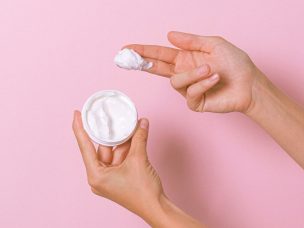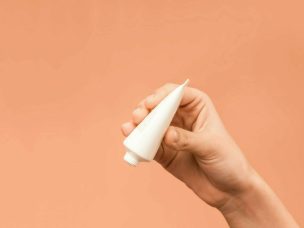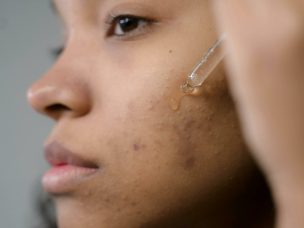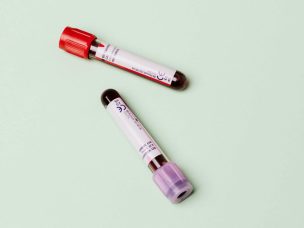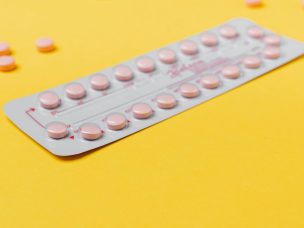March 15, 2024
Clindamycin–Benzoyl Peroxide Gel Versus Clindamycin Lotion for Hidradenitis Suppurativa
Clindamycin–benzoyl peroxide gel demonstrated comparable clinical efficacy to clindamycin lotion for the treatment of mild to moderate hidradenitis suppurativa in a pilot trial. Hidradenitis suppurative (HS) is defined as a chronic inflammatory cutaneous condition that involves inflammatory nodules, abscesses, tunnels, and scarring. Monotherapy with topical clindamycin is indicated for treating HS of mild-to-moderate severity. While...
Heat Shock Protein 90 Inhibitor RGRN-305 and Hidradenitis Suppurativa
The inhibition of heat shock protein 90 mediated by RGRN-305 serves as a potential therapeutic tool in the treatment of hidradenitis suppurativa, according to the results of a new clinical trial. Hidradenitis suppurativa (HS) is an immune-mediated systemic inflammatory condition, predominantly associated with cutaneous changes. Heat shock protein 90 (HSP90) mediates the activity of proinflammatory...
Patient Outcomes of Ambulatory Care in Hidradenitis Suppurativa
Compared to standard care, ambulatory care services are more cost-effective and are associated with decreased financial burden in the long term, according to the results of a randomized controlled trial. Hidradenitis suppurativa (HS) is described as a chronic inflammatory cutaneous disorder and is associated with substantial treatment costs. The financial implications of the disease correlate...
Retinal Microvascular Alterations in Hidradenitis Suppurativa Patients
Optical coherence tomography angiography demonstrates characteristic retinal vasculature features in patients with hidradenitis suppurative, allowing non-invasive monitoring of visual changes in this population. Hidradenitis suppurativa (HS) is associated with the relapsing–remitting course of suppuration and scarring. This disease has widespread systemic manifestations, including ocular complications, which prompt ocular examination in HS patients. Optic coherence tomography...
Long-Term Efficacy and Safety of Evinacumab in Refractory Hypercholesterolemia Patients
Evinacumab was found to be safe and well-tolerated and was associated with a sustained reduction in the levels of low-density lipoprotein cholesterol in patients diagnosed with refractory hypercholesterolemia. Individuals diagnosed with refractory hypercholesterolemia do not achieve the target levels of low-density lipoprotein cholesterol (LDL-C) despite lipid-lowering treatment at maximally tolerated dosages. These refractory hypercholesterolemia patients...
Percentage Reduction in Low-Density Lipoprotein Cholesterol and Stroke Prevention
For the strategy of targeting low-density lipoprotein cholesterol to less than 70 mg/dL, patients with >50% reduction from baseline but not patients with <50% reduction from baseline showed superior stroke risk reduction when compared to a target level of 100 ± 10 mg/dL. The Treat Stroke-to-Target (TST) trial findings indicate the superiority of targeting low-density...
Plasma Atorvastatin Metabolite Levels Correlate With Low-Density Lipoprotein Cholesterol Reduction
The trough plasma concentration of atorvastatin metabolites has a moderate correlation with a decrease in the levels of low-density lipoprotein cholesterol, according to the results of a randomized double‐blind crossover trial. Atorvastatin metabolites hold potential value in monitoring and optimizing the drug dosage for optimal clinical efficacy. Statins form the standard treatment in the primary...
Rosuvastatin Versus Atorvastatin Treatment in Adults With Coronary Artery Disease
Rosuvastatin and atorvastatin were comparable in terms of all-cause death, coronary revascularization, myocardial infarction, or stroke at 3 years of intervention in a randomized prospective trial. However, rosuvastatin administration was related to comparatively lower levels of low-density lipoprotein cholesterol and a higher risk for cataract surgery and antidiabetic treatment. Statins are known to be effective...
Cardiometabolic Effects of Omnivorous Versus Vegan Diets in Identical Twins
Compared to a healthy omnivorous diet, a healthy vegan diet was associated with improved cardiometabolic parameters, including decreases in low-density lipoprotein cholesterol levels, fasting insulin levels, and body weight in an 8-week study of identical twins. Dietary patterns with high plant-based and low animal-based foods are associated with positive health and environmental outcomes. A well-formulated...
